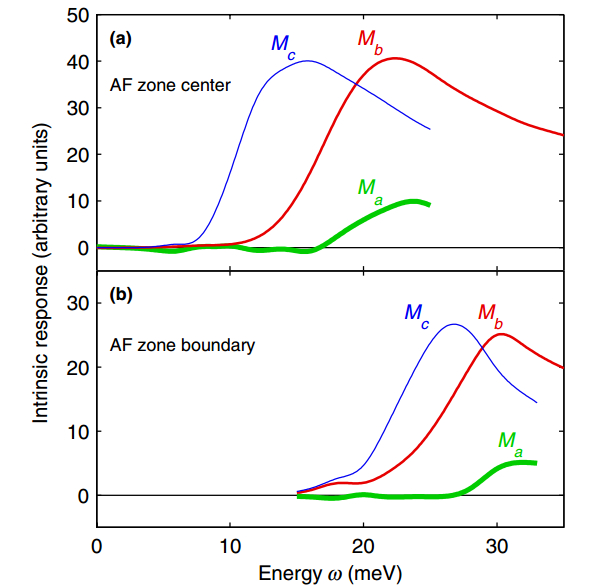ICQM member Yuan Li's group publishes an article in Physical Review X reporting direct evidence for an itinerant origin of antiferromagnetism in iron pnictides superconductors
Iron pnictides, a class of high-temperature superconductors discovered only in 2008, have presented many fundamental puzzles for physicists working on superconductors. One of the puzzles is the proximity of an antiferromagnetic phase to the superconducting phase in these materials, raising the tantalizing possibility of a fundamental connection between magnetism and superconductivity in these materials. What is the microscopic origin of their antiferromagnetism, then? Existing experiments point to two possibilities: Either the antiferromagnetism arises from spin moments of electrons localized on (iron) nuclei or it comes from the collective ordering of the spins of itinerant (mobile) electrons. However, no “smoking-gun” evidence has been found for either of these possibilities.
In fact, the two scenarios leave fundamentally different signatures in how the microscopic magnetic moments (or spins) ordered into the antiferromagnetic state fluctuate when excited. In the local-moment picture, the moments have a fixed size, so their fluctuations are dominated primarily by their precessions around the ordering direction. In the itinerant-electron picture, the sizes of the moments themselves can additionally fluctuate, giving rise to “longitudinal spin excitations.”
In the newly published paper' Longitudinal Spin Excitations and Magnetic Anisotropy in Antiferromagnetically Ordered BaFe2As2' , Prof. Yuan Li and his Ph.D. student Chong Wang in collaboration with Prof. Pengcheng Dai's group at the Institute of Physics, Chinese Academy of Sciences have investigated the spin excitations on BaFe2As2, a “parent” compound of iron pnictides, using spin-polarized inelastic neutron scattering (INS). The measurement was performed on spectrometer IN22 at Institute Laue Langevin in Grenoble, France, with the support of Dr. Regnault. Indeed, spin-polarized INS can selectively determine the direction of the excited spin fluctuations. Using a state-of-the-art implementation of this technique and a very large single-crystal sample, Prof. Yuan Li and his collaborators have achieved an unprecedented precision in determining the spin fluctuations and are thus able to uncover an unequivocal signature of longitudinal spin excitations in the experimental spectrum, in other words, smoking-gun evidence for a sizable contribution of itinerant electrons to the antiferromagnetism.
Since itinerant electrons are in no doubt important for superconductivity in doped iron pnictides, this finding puts on a firmer footing the notion of an intimate connection between the magnetism and the superconductivity.
The work at Peking University is supported by the NBRP of China and the NSF of China.

Figure 1, Intrinsic spin-excitation signals extracted from the neutron scattering data. Ma represents longitudinal spin excitations; Mb and Mc represent two transverse spin excitations.